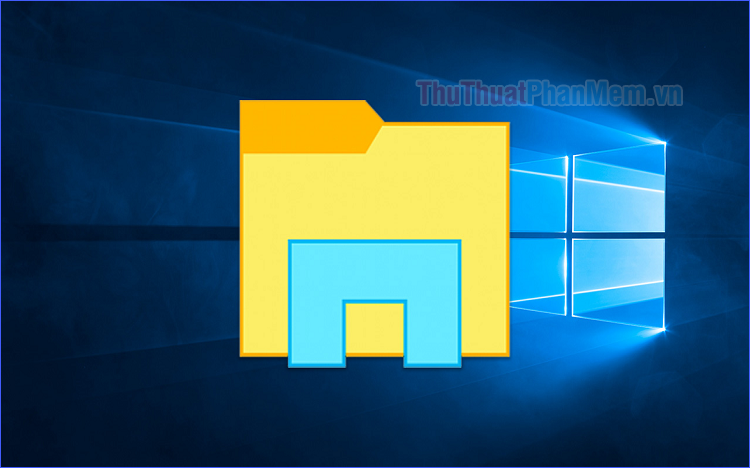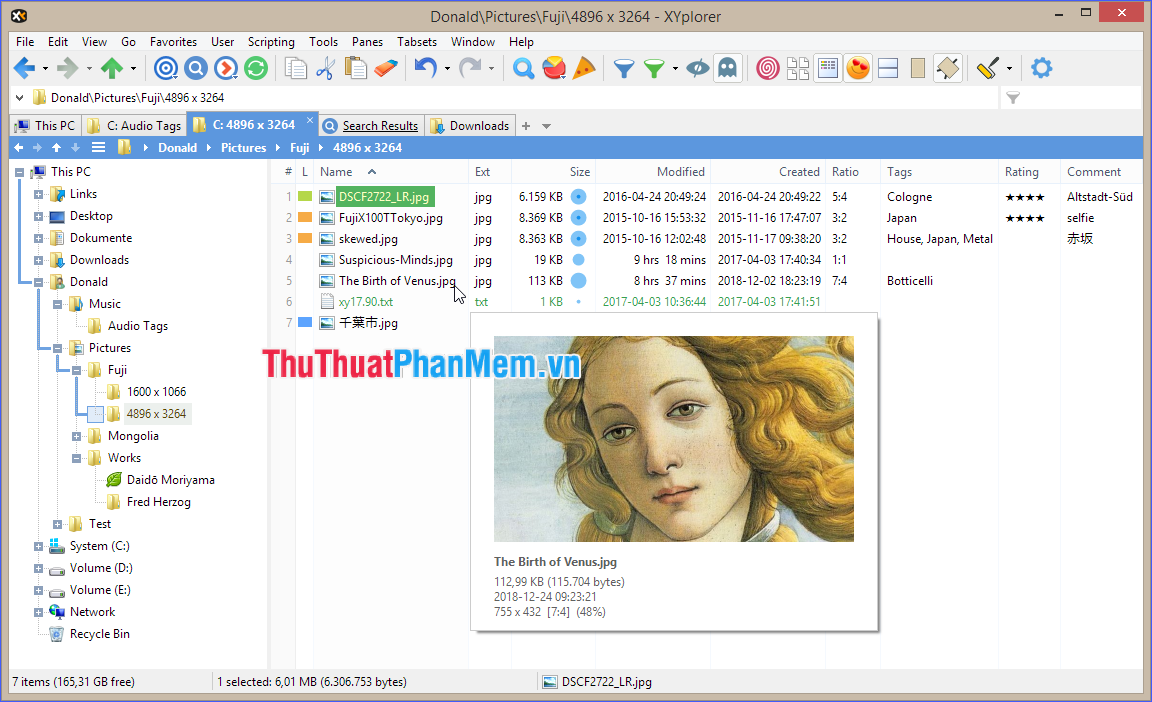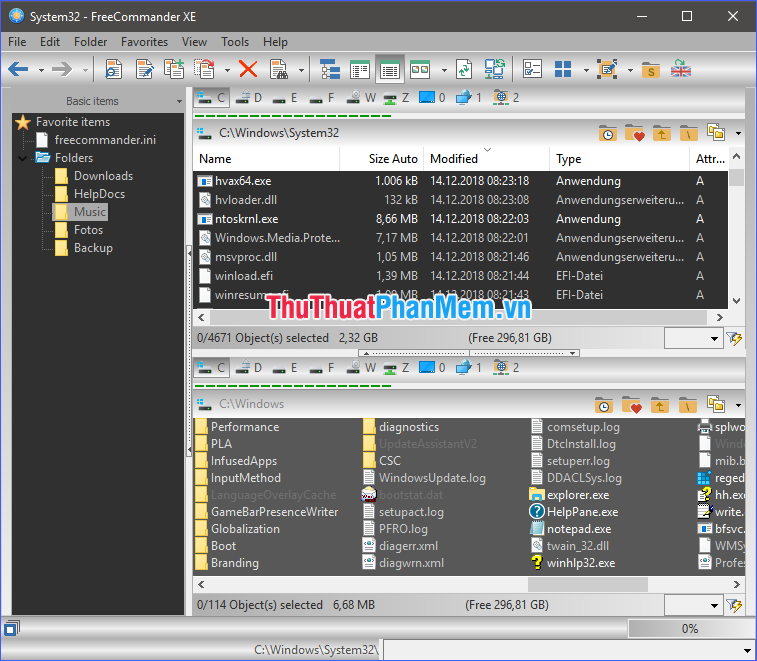Top 5 file management software best replace File Explorer on Windows
The vast majority of Windows users use the existing File Explorer to manage or move files. This file manager is good enough, and the default is available in Windows, but not the best. If you have higher requirements for managing the file system on your computer, then it's time to find a new solution. Please refer to the top 5 best file management software to replace File Explorer below.

1. XYplorer
XYplorer is one of the best Windows File Explorer alternatives. So what makes it so appreciated?
First, it is "portable". You don't need to worry about it's not available on other computers that you have to use, just store it on USB like all other portable applications.
Second, it has an impressive set of features that will appeal to both casual users and fastidious users.
For example, this explorer browses by tab. Tabs work similarly to tabs on a web browser; You can rearrange them, drag and drop files between them, and pre-configure them. Another highlight is that the application supports custom scripts, custom fonts and colors, and secondary arrangements.
The cost to get XYplorer is $ 39.95 for an annual license, or $ 79.95 for a permanent license.
Download: XYplorer

2. Directory Opus
If you still have concerns about XYplorer, then consult the next software - Directory Opus .
It is arguably a bit harder to get used to than XYplorer. While the first application has a similar design to Windows File Explorer, Directory Opus introduces a completely different style.
If you take the time to learn, you will be rewarded. Features include support for file synchronization and copy search, script creation, graphics that allow you to flag and test markup files, and a fully customizable interface.
The Light version costs about $ 34 while the Pro version is about $ 61. The software allows a free 60-day trial.
Download: Directory Opus

3. fman
If you're the type of user who doesn't like to click too much, fman will be a perfect choice.
For fman , "fast" is the most important feature. Type Ctrl + P on your keyboard, a window will open allowing you to enter the directory you are looking for, then just press Enter to go to that directory. Of course, during the import process, fman will give you suggestions for quick access.
The two-frame interface provides convenient convenience for moving files between folders.
fman is a keyboard-based manager. Even if you're not familiar with using hotkeys to get things done faster, press Ctrl + Shift + P to open a command panel. You can search for the necessary keyboard commands and press Enter to launch it. Over time, you'll find yourself using fewer and fewer commands.
If fman doesn't have enough features for you by default, there are plenty of user-created plugins to further expand it. Just open the command prompt and type "Install Plugins" to see all the available plugins.
You can try fman for free. To use it regularly, you must purchase a license for € 18 .
Download: fman

4. Q-Dir
Q-Dir stands for Quad-Directory Explorer, so called by default it is opened with four explorer frames.
It includes all the standard features included in the default Windows File Explorer, along with the following salient features:
- Browse by tab in all four views;
- Set color filters for files and folders;
- Show directory structure of tree branches;
- Support multiple languages;
- Portable version can run from USB drive;
- Save your favorite folders for quick access later.
This is the first completely free software on the list.
Download: Q-Dir

5. FreeCommander
FreeCommander is a perfect Windows File Explorer alternative if you're fed up with the old default interface and want to find a new experience but don't need to spend money.
This is not an advanced change with any additional features, but what it brings is the larger icons, more colors and the standard features that you use often.
FreeCommander will certainly meet your expectations with these features:
- Interface by card;
- Dual panel, with the ability to add a TreeView showing the folder hierarchy;
- Support ZIP file;
- Compare and sync any directory;
- Integrated DOS Command Prompt;
- Intuitive icons and shortcuts (customizable);
- Extremely friendly user interface.
Download: FreeCommander

Through the above article, I have introduced you to the top 5 best file management software today to replace File Explorer on Windows. You choose for yourself an appropriate software offline!
You should read it
- 9 ways to enable File Explorer in Windows 10
- 7 notable changes in File Explorer Windows 11
- Fix File Explorer error not working on Windows 10
- 9 outstanding features of Solid Explorer you may not know
- How to manage tabbed data on Windows 10
- Steps to fix slow Windows File Explorer
- How to fix Working On It on File Explorer Windows 10
- A series of leaked photos shows that File Explorer is about to receive a complete design overhaul on Windows 11
May be interested
- Steps to fix slow Windows File Explorer
 if you have to manage and work with files on a daily basis, file explorer performance issues can significantly hinder your productivity. fortunately, there are different ways to fix slow or unresponsive file explorer.
if you have to manage and work with files on a daily basis, file explorer performance issues can significantly hinder your productivity. fortunately, there are different ways to fix slow or unresponsive file explorer. - How to fix explorer.exe error on Windows 10
 how to fix explorer.exe error on windows 10. explorer.exe is a windows file management program that helps users to access folders and files in windows and organize and classify folders and files according to criteria such as name, size, creation date ... suddenly one day explorer.exe on your windows 10 'bad'?
how to fix explorer.exe error on windows 10. explorer.exe is a windows file management program that helps users to access folders and files in windows and organize and classify folders and files according to criteria such as name, size, creation date ... suddenly one day explorer.exe on your windows 10 'bad'? - 7 Useful Changes Microsoft Should Make to File Explorer
 file explorer is still an important part of windows, and with a few smart updates, microsoft could improve things even more for users.
file explorer is still an important part of windows, and with a few smart updates, microsoft could improve things even more for users. - A series of leaked photos shows that File Explorer is about to receive a complete design overhaul on Windows 11
 file explorer is one of the areas most frequently interacted with by users on windows in general, so any changes in this area will have a big impact on the operating system experience.
file explorer is one of the areas most frequently interacted with by users on windows in general, so any changes in this area will have a big impact on the operating system experience. - Restore lost File Explorer icons on Windows 10 Start Menu
 by default, windows 10 displays the file explorer icon in the lower left corner of the start menu, as well as on the taskbar so that users can easily open file explorer quickly.
by default, windows 10 displays the file explorer icon in the lower left corner of the start menu, as well as on the taskbar so that users can easily open file explorer quickly. - Summary of ways to open File Explorer on Windows 11
 similar to previous versions of windows, file explorer is an essential part of windows 11, helping users manage their files and folders in a simpler, more scientific way.
similar to previous versions of windows, file explorer is an essential part of windows 11, helping users manage their files and folders in a simpler, more scientific way. - Fix File Explorer not responding error in Windows 11/10
 if file explorer is not working, you will not be able to access files, folders, and drives on your computer. you can find below the steps to fix file explorer not responding issue in windows 10/11.
if file explorer is not working, you will not be able to access files, folders, and drives on your computer. you can find below the steps to fix file explorer not responding issue in windows 10/11. - Here's how to make the File Explorer Windows 10 interface look like File Explorer Windows 7
 some users do not like the new file explorer interface. if you like windows 7's file explorer interface or simply don't like the ribbon menu on the new file explorer interface, you can easily change the file explorer interface to the file explorer interface on windows 7.
some users do not like the new file explorer interface. if you like windows 7's file explorer interface or simply don't like the ribbon menu on the new file explorer interface, you can easily change the file explorer interface to the file explorer interface on windows 7. - How to hide / show the status bar in File Explorer on Windows 10
 the status bar at the bottom of file explorer tells you how many items are inside and selected for the currently open folder. the two buttons below are also available on the right side of the status bar.
the status bar at the bottom of file explorer tells you how many items are inside and selected for the currently open folder. the two buttons below are also available on the right side of the status bar. - How to delete folder and file search history in Windows Explorer?
 on windows operating systems (windows 7, windows 8, windows 10), windows explorer remembers the location of files and folders when you type in the address bar on windows explorer. the files and folders when you enter will be displayed automatically accessible by clicking the down arrow at the end of the address bar to drop down the list.
on windows operating systems (windows 7, windows 8, windows 10), windows explorer remembers the location of files and folders when you type in the address bar on windows explorer. the files and folders when you enter will be displayed automatically accessible by clicking the down arrow at the end of the address bar to drop down the list.









 How to install Ubuntu on a VMware virtual machine
How to install Ubuntu on a VMware virtual machine How to control a remote computer with UltraViewer for free
How to control a remote computer with UltraViewer for free How to create USB BOOT standard UEFI - GPT standard
How to create USB BOOT standard UEFI - GPT standard Software for eye protection when using the best computer
Software for eye protection when using the best computer How to reduce the file size Cad
How to reduce the file size Cad Top 5 best stubborn file deletion software
Top 5 best stubborn file deletion software